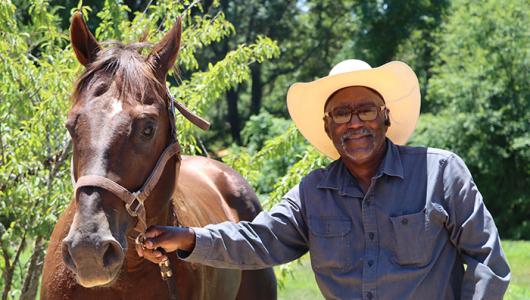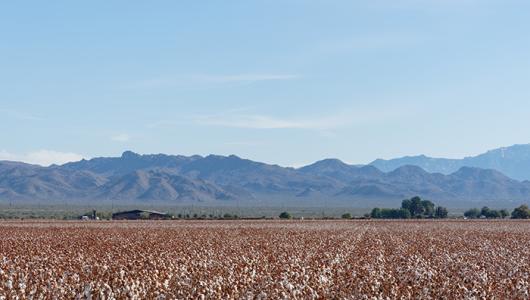This Friday meet Rhonda Larson of Hayti, South Dakota. During the school year Rhonda serves special needs students as a teaching aide in Hamlin County. When she’s not focused on her day job, her passion is flowers, a tradition that was passed down from her mother and grandmother. With help from her conservation efforts and pollinators, that passion has sprouted into a blooming cut flower business.

Growing the Business
Rhonda started growing flowers in her basement and a makeshift shed on her family’s farmstead. She began selling her flowers at farmers markets, and as her business flourished, Rhonda wanted to expand her operation by using a portion of a former soybean field to increase her yields. Because her husband is a farmer, she was already familiar with USDA’s Natural Resources Conservation Service (NRCS) and reached out to see if NRCS could help her reach her goals.
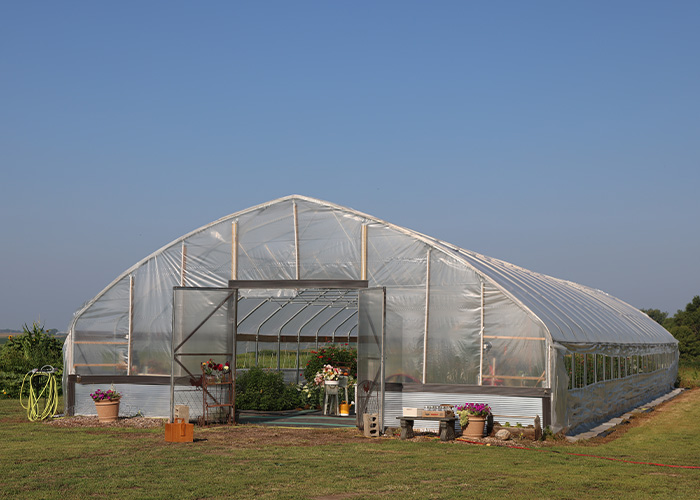
To lengthen her growing season, Rhonda opted for a high tunnel using financial assistance through the Environmental Quality Incentives Program (EQIP). Given the nature of the former soybean field, Rhonda had immediate concerns about the soil and how to deliver much needed water to the plants. Working with NRCS District Conservationist Kelsey Ramerth, a conservation plan was developed to address Rhonda’s water and soil resource concerns and ensure that the high tunnel was strategically placed.
“I could not have done this without Kelsey,” Rhonda said. “She gave me the confidence to take this leap and the information to make it work.”
Rhonda completed construction of the high tunnel in November 2022 and immediately began working on tackling the other resource concerns with EQIP, adding a micro irrigation system to help provide water to the tunnel and implemented mulching to improve soil health.
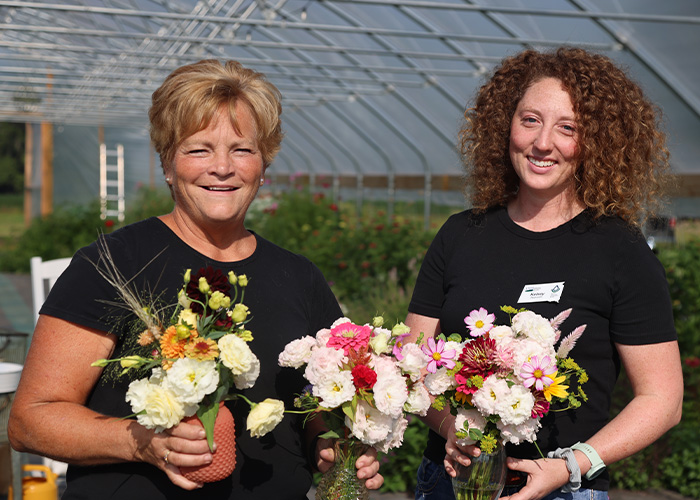
Supporting Pollinators
Pollinators play a critical role in agriculture and Rhonda’s cut flower business. With the Conservation Reserve Program (CRP), she was able to create more pollinator habitat with a pollinator planting between the new high tunnel and the adjacent soybean field.
USDA’s Farm Service Agency administers CRP, and NRCS provides technical assistance through conservation planning. In exchange for a yearly rental payment, farmers enrolled in the program agree to remove environmentally sensitive land from agricultural production and plant species that will improve environmental health and quality.
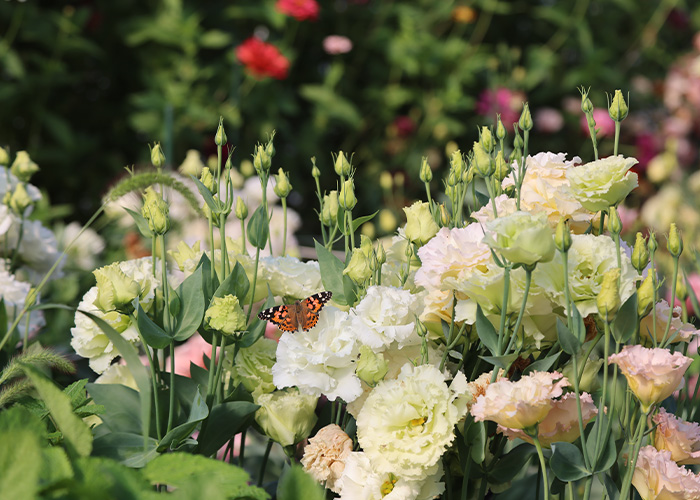
With abundant acres of legume-rich forage or diverse wildflower plantings, CRP supplies pollinators with large-scale sources of pollen and nectar. These same lands offer tremendous benefits to native bumble bees and other pollinators that require diverse wildflowers, shrubs, and safe nesting sites.
Looking to the Future
Despite the goals that she has achieved, this is not a stopping point for Rhonda. Now that her flower garden stands at just under an acre with the high tunnel, it serves as a launching point for her future endeavors.
“Before the high tunnel I didn’t have the confidence to call this a business,” Rhonda said. “I want to continue to diversify my flower offerings, add more vegetables to my operation, and maybe sell seedlings.”
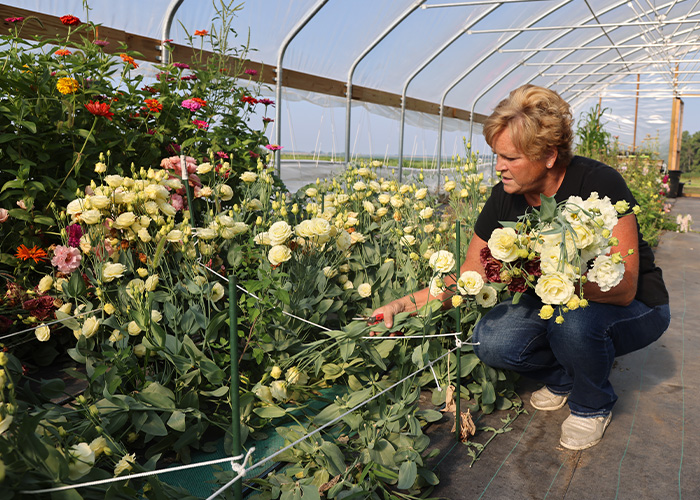
Rhonda has taken the love of flowers passed down from her mother and ran with it, bringing her budding operation to new heights. She is dedicated to creating an operation that will last and wishes to share her love of flowers with her community. She wants to not only increase her participation with farmer’s markets across the state, but also invite students from her school and others to tour her operation so she can share her passion with them as well.
“This is where I am happiest,” she said.

More Information
Visit local farms, ranches, forests, and resource areas through our Fridays on the Farm stories. Meet farmers, producers and landowners who are working to improve their operations with USDA programs.
USDA offers a variety of risk management, disaster assistance, loan, and conservation programs to help producers weather ups and downs in the market and recover from natural disasters as well as invest in improvements to their operations. Learn about additional programs.
For more information about USDA programs and services, contact your local USDA service center.
Andrew Thomason is a state outreach coordinator for NRCS in Iowa.

